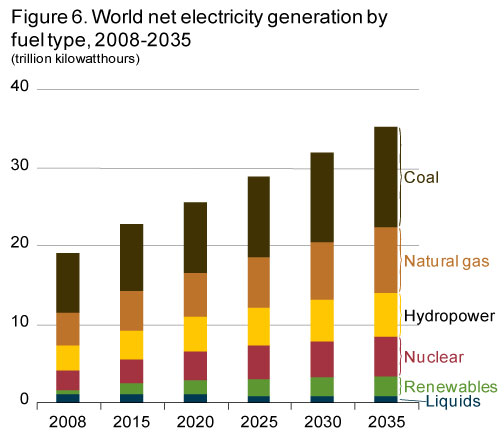More on Primus Green Energy's Use of Natural Gas as a Bridge Feedstock
Here is another look at Primus Green Energy and its compromise use of cheap natural gas as feedstock -- in place of the original plan to use biomass feedstock. Just like Sundrop Fuels, Primus Green Energy is behaving in a pragmatic and flexible fashion, to establish proof of technology first, and to develop the essential cash flow which will allow them to proceed with their longer range plans.
The Hillsborough, New Jersey-based company has developed a process for converting biomass into gasoline, jet fuel, and other chemicals. But because its biomass technology isn't quite ready for prime time and its process works with natural gas, its first demonstration plant will use natural gas as a feedstock.
"We're using natural gas as either a bridge to biomass or a bridge to natural gas," says CEO Bob Johnsen, a biofuels veteran who joined the company in March. "We can develop our processes for biomass while concurrently producing product at larger scale."
The company broke ground on the demonstration plant last week and is seeking to raise $60 million to $70 million for a commercial-scale operation which it hopes to begin building later this year or next year. To date, it raised $40 million from conglomerate Israel Corp. in 2007.
Johnsen, a co-founder of Mascoma and the company which became Verenium, was attracted to Primus Green Energy because the flexibility of its technology and because it's at stage where it can be scaled up, he says.
The company has modified a 1970s-era process called Methanol to Gasoline (MTG) originally developed by Mobil. Its plants have multiple steps but the core technology is converting synthesis gas, or syngas, into gasoline or jet fuel. That syngas can be made either from biomass, such as wood pellets or miscanthus, or from natural gas using a steam reformer. Because it's biomass-to-syngas gasifier didn't achieve the performance needed, the company will move ahead with natural gas first.
Once the syngas is produced, the gas is treated with catalysts to produce methanol and then fed into a reactor to synthesize the gas into liquid high-octane gasoline or jet fuel. The company has modernized the MTG process and engineered a more efficient system using a combination of its own inventions and off-the-shelf products, executives say. _TechnologyReview
There is nothing wrong with biomass to liquids in principle. But BTL cannot compete with either GTL or CTL in today's marketplace. And if the price of crude oil keeps dropping, even GTL will be unable to compete with oil.
It is fine to be idealistic. But if you are in business, you will need to temper your idealism with a healthy dose of realism, based upon current and near-term future market conditions.


























